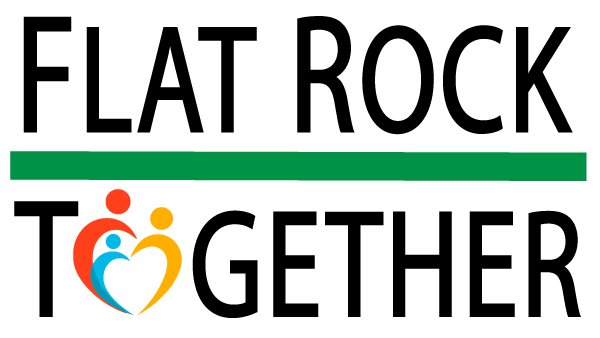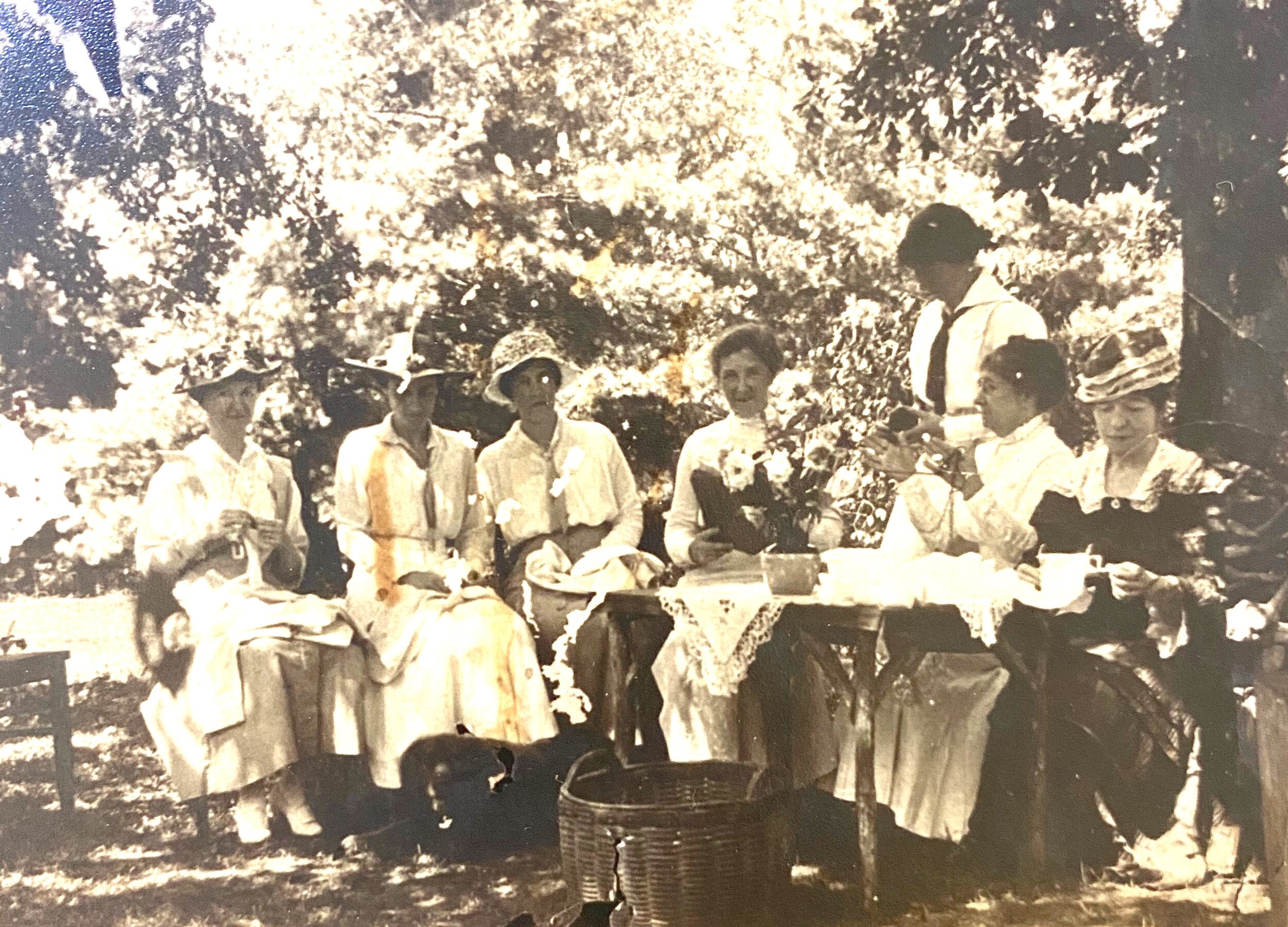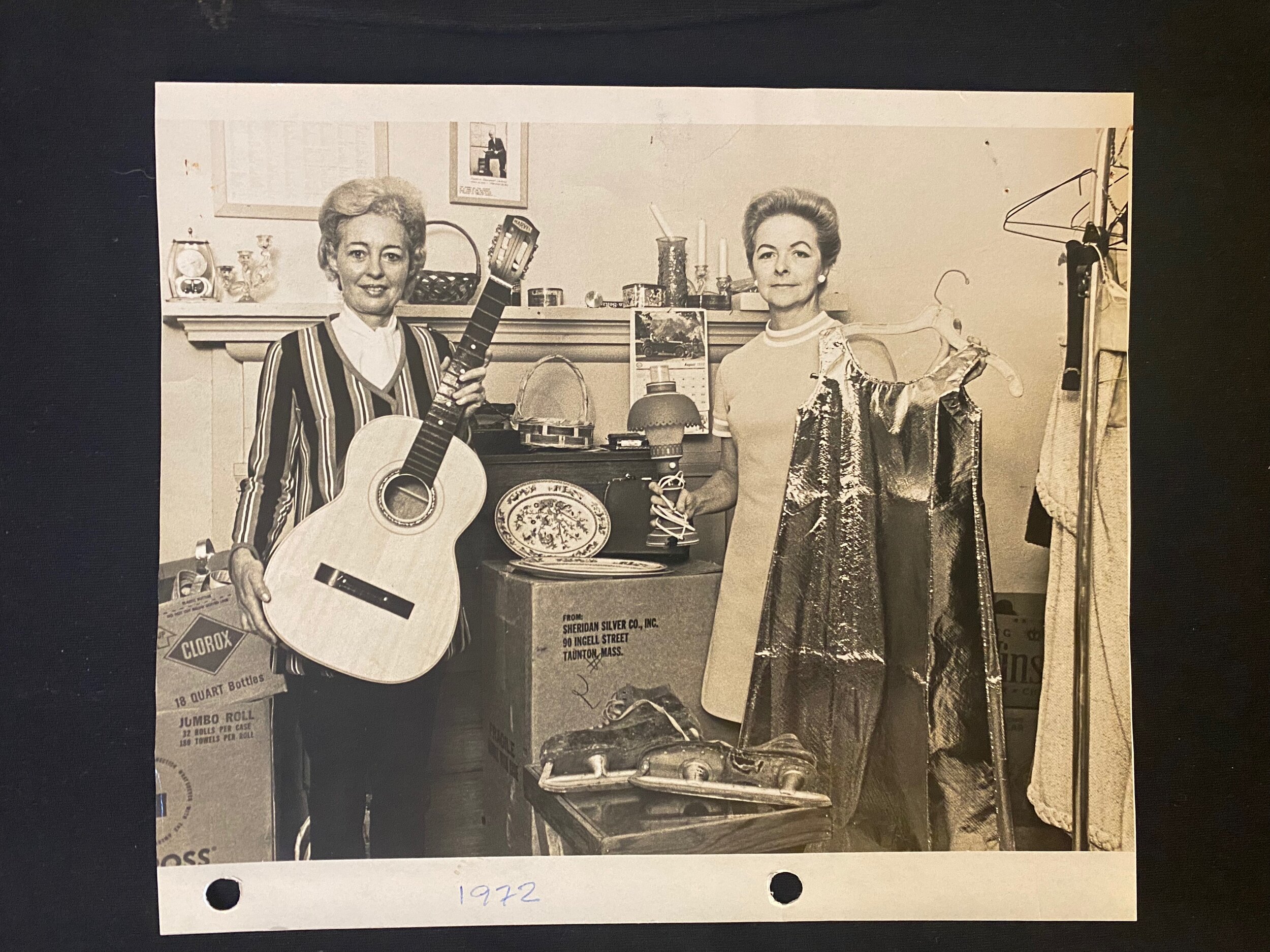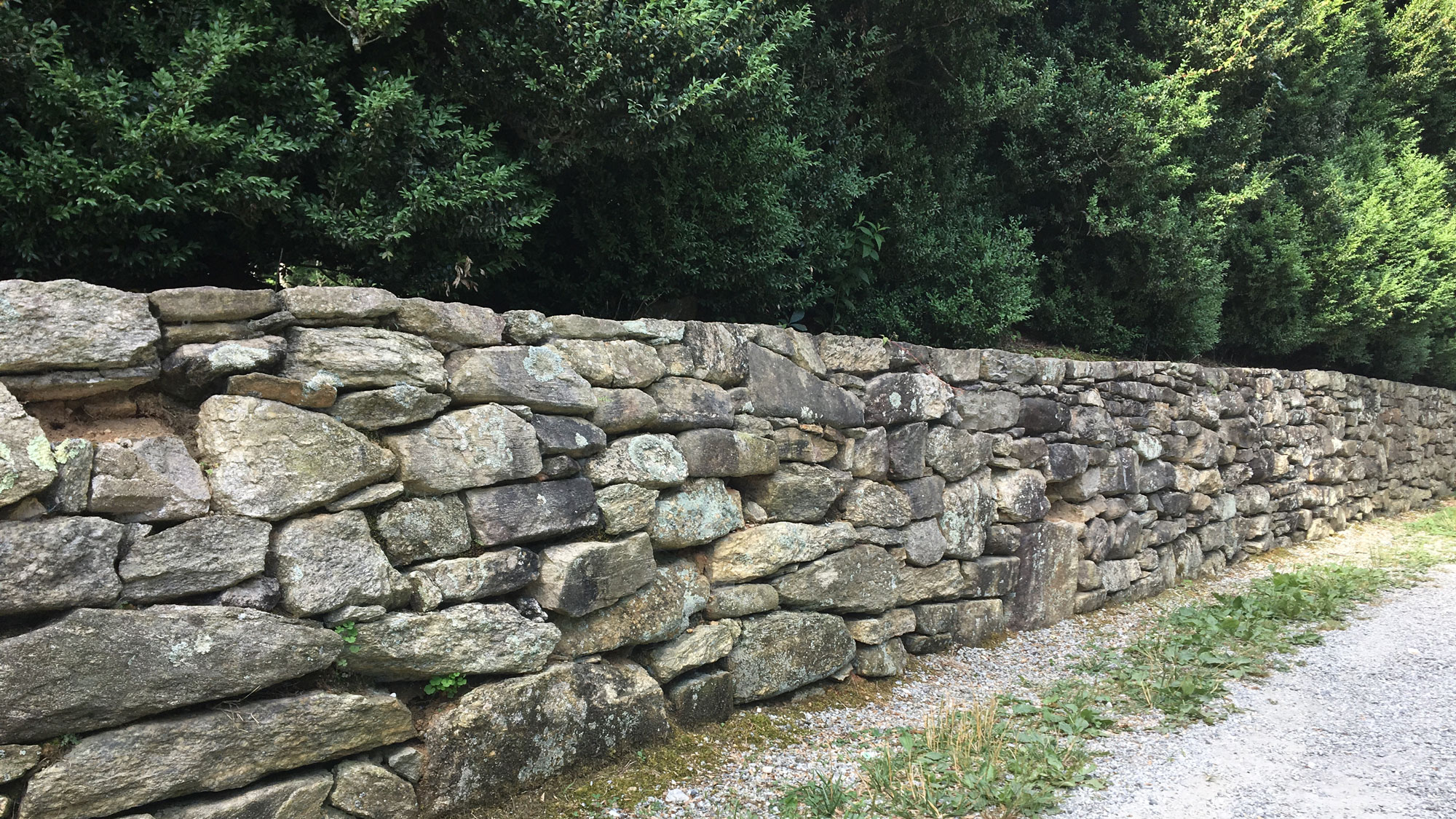The Ladies Aid Society of Flat Rock
/Update: October 1, 2023
In 2023, The Ladies Aid Society of Flat Rock recently distributed $25,000 to 10 local organizations.
Flat Rock Backpack Program $2,500.00
Four Seasons Angel Fund $2,500.00
Hendersonville Rescue Mission $2,500.00
Safelight $2,500.00
St. Gerard House $2,500.00
Children & Family Resource Center:
Adolescent Parenting Program $2,500.00
Free Clinics $2,500.00
Open Arms Pregnancy Center $2,500.00
True Ridge $2,500.00
Council on Aging $2,500.00
The History of The Ladies Aid Society of Flat Rock
In 1880, a group of public-spirited women created one of the oldest - if not the oldest - philanthropic organization in western North Carolina. The Ladies Aid Society of Flat Rock was established by 13 prominent Charleston residents who spent their summers in Flat Rock. Now, 141 years later, their vision and mission is being carried on my another generation of compassionate women working to make life easier for the less fortunate in Henderson County.
Early members of the Ladies Aid Society
The Ladies Aid Society was originally established to provide care and support for local families who served as caretakers, gardeners, and household staff for Flat Rock’s summer estates. The members of the Society were concerned about the health and safety of those families who lived year-round in Henderson County. Pooling their resources, the ladies provided needy families with food, clothing, firewood, and other supplies necessary to their well-being during the hard winter months in the mountains of North Carolina.
Almost exactly 100 years later, a young boy entered Hill’s General Store in East Flat Rock to pick up food and sundries for his family. That boy, Tim Jones, was forever changed by the moment and today is a Deacon at St. James Episcopal Church in Hendersonville. The experience was so seminal that he delivered a homily in 2021 on the topic. Parts of his homily are excerpted for this article.
—-
Because of my father’s illnesses and the mountain of medical expenses that came with them, there were times we couldn’t afford to go to the store. There were times when we would pray the Lord’s prayer and “give us today our daily bread” wasn’t just a pretty thing to say. It was a literal request.
I have forgotten many things in my life, but there is one moment I will never forget. In my mind, I can still see pretty much every detail. It was the first time that I went to get groceries and something different happened at the checkout counter.
Tim Jones
Homily for 4th Sunday in Lent 2021
—-
Although no formal written records exist of the groups earliest years, it is believed that the Society was organized under the direction of Julia Ewing Grimke-Drayton who was the wife of the summer rector of St. John in the Wilderness. Grimke-Drayton’s daughter, Julia Hastie is credited as being the first president of the Society. A complete list of the founding members is listed at the end of this article.
Long-time LAS member, Debby Staton believes that over time the focus of the ladies’ philanthropic efforts expanded to include more of the local population. “It evolved.They realized that if the people that worked for them in the summer needed help, then the people up on the mountain or down in the holler needed help as well.”
—-
One day my father sent me to get some things without any money. He told me to make sure to tell Elsie (the owner of the store) who I was. Instead of ringing me up like normal, she turned around to the antique cash register behind her. She took out a ledger book and started slowly writing down the items I had and that was that. I was just free to go with them. -Tim Jones
—-
Badge for LAS Garden Party at Elliott Place.
For many decades, LAS members provided assistance directly to those they helped. The Society’s early records show clothing, food, and firewood being donated by the group when they received word of individuals or families experiencing some type of crisis. The Society also covered medical bills and purchases at local grocery stores for the elderly, frail, and families hit by disaster.
Past LAS President, Eleanor Flowers, remembers hearing stories from an older member who helped deliver aid when she was young girl. “She remembered going in a horse drawn gig with her mother up on Pinnacle Mountain to deliver food, firewood and a fruit basket to a family. I think that sense of history is important to how the Society continues through the years.”
Initially, LAS was a non-sectarian group - although all the earliest members were associated with St. John in the Wilderness Episcopal Church. When St. John transitioned from a summer church to a year-round church after 1960, the women were invited to formally associate with the church. A building was erected on church grounds so that the Society might house medical equipment they had begun to loan without charge to local residents in times of a medical crisis. The building was used to store wheelchairs, hospital beds, crutches, canes, and miscellaneous medical equipment.
Mrs. Newton Angier and Mrs Alexander Schenck
Operating under the ministry banner of St. John, the members held teas, bazaars, bridge parties and other events to fund their charitable giving. By 2004, however, LAS membership had expanded to include ladies of many different denominations and it was determined that the Society and the church would be better served if LAS was a stand-alone 501(c)(3) nonprofit organization.
—-
By the time I reached my Dad, I had so many questions. What was this new thing where we could get food without money? That was easy. He told me it was called credit. How did we suddenly get it? That required a little more explaining.
There was a group called the Ladies Aid Society. Before he got sick my father had been a caretaker on some property across the road from Saint John in the Wilderness in Flat Rock. After he got sick and my mother left, some of the ladies in that parish heard about the hard times we were having so they set up two monthly charge accounts for us. One at Dewey Sherman’s store on Greenville Highway and another at Hill’s General Store in East Flat Rock. They wanted to make sure we had what we needed. -Tim Jones
—-
A letter sent to the membership in September 1965 provides a glimpse into how LAS operated for nearly a century and the nature of their philanthropy.
“The ladies aid society this year from September 1964 to September 1965 has had fewer calls for help than usual. Perhaps going to a comparatively mild winter.
(1) Only one house burned at this we were able to give aid in the form of furniture clothing bedding and $15 in cash.
(2) A family a mother of three girls and one boy were given clothing and food and Xmas basket of food
(3) An old couple both sick and unable to work were given $10 per month through the cold months, as well as cold for the only heat in the house, or means of cooking. We paid the drugstore bill through one of the winter, and as long as we were able. They also received food at times
(4) Two lone sisters receives monthly payment of $15. The older one is confined to bed most of the time. The house is cold. Both are elderly, and both have had falls and broken bones. They’ve also been given clothes and stove wood. Also $20 worth of food. They are always most grateful.
(5) A faithful old woman, now sickly and unable to work, gets $10 per month credit for food at a nearby grocery.”
LAS Operated the Book Exchange in the Old Post Office from 1980 to 2016.
Early on, when the women wanted to earn extra money for their project, they did needlework all winter and under the trees in Flat Rock until August. Then a Bazaar was held at the old Highland Lake Inn and they sold their handiwork, baked goods, churned tubs of ice cream, and provided grab bags for children. The event was both festive and fruitful for fund-raising. At least one author describing the event believed the husbands “had to buy most of the needlework.” When the old Inn burned in 1915, the Society turned to other endeavors to raise money including plays, bridge parties, and rummage sales.
Eventually, charitable contributions were directed more to local nonprofits and less frequently directly to individuals in need. From 1980 to 2016, the Ladies Aid Society operated The Book Exchange on the bottom floor of the Old Post Office on Greenville Highway. Through sales of used books, the Society was able to generate and contribute considerable amounts to charities throughout Henderson County. The groups focus was always to support the smaller, local charities that were determined to make a significant difference in the community.
The closing of the Book Exchange in 2016 has compelled LAS to reexamine how it will raise funds. The pandemic has also created significant challenges. Current president, Jan Shefter, believes the Society is ready to meet those challenges and forge the next chapter in the groups long and storied history. “We’ve gone through significant changes in recent years, especially with the closing of the book exchange,” she says. “But every time the organization has been able to step up and answer that challenge.”
—-
As a little boy, I was perplexed. I seriously wanted to know WHY complete strangers would care about people they didn’t even know?
I remember my father’s answer. He said, “I guess it’s because they’re just very loving people.” My Dad’s answer has hovered over my life ever since then. When I think of the word, “love”, I still think of the Ladies Aid Society of Flat Rock. They weren’t just some people talking warm fuzzy thoughts about love. They showed it by giving.
They expressed love by putting bread on our table. -Tim Jones
—-
In 2020, without the benefit of a fundraiser because of COVID concerns, LAS was still able to provide a total of $10,000 to the Flat Rock Backpack Program, Safelight, Children and Family Resource Center, St. Gerard House, The Free Clinic, and Interfaith Assistance Ministry.
Shefter believes the Society will adapt to current circumstances and continue forward. “This organization has been in existence since 1880, and it would be tragic for it to not continue and fulfill the purposes of the original 13 founders. We want to carry on their tradition and their vision.”
Debby Staton believes that despite the current challenges, the Ladies Aid Society remains an important part of Flat Rock’s long and storied history. “The Ladies Aid Society is not a historic home or estate, but I think we are an important part of Flat Rock’s history. I think it is important that the organization and our history continue to be preserved and celebrated for all that it’s accomplished in the last 140 years.”
—-
Here is what I know about that: 45 years ago, I never met any of those members of the Ladies Aid Society whose generosity helped carry my father and I through very difficult times.
I don’t know the names of the people who made the decision to help us, but their love impacted my life in ways that are almost beyond calculation. They are a big part of why I am in my current vocation. They’re a big part of why I am an Episcopalian today.
They share a part in everything I do in ministry today because as a little boy, I grew up knowing that I was loved by people who didn’t even know me.
Imagine that! -Tim Jones
Tim Jones, second from right, with members of the Ladies Aid Society of Flat Rock.
•You can learn more about the Ladies Aid Society of Flat Rock at www.ladiesaidsociety.org or contact them at lasfr1880@gmail.com.
•See the full text of Tim Jones’ Homily here.
•The Founding Members of the Ladies Aid Society 1880:
Sue King
Emma Drayton Grimke
Ella Drayton Memminger
Leila Sams Elliott
Elizabeth Huger Pringle
Margaret Campbell
Louisa King Howe
Elise Rutledge
Alice Izard Middleton Lowndes
Caroline Lowndes Pringle
Emily Rutledge Lowndes Allston
Alicia Middleton Trenholm








